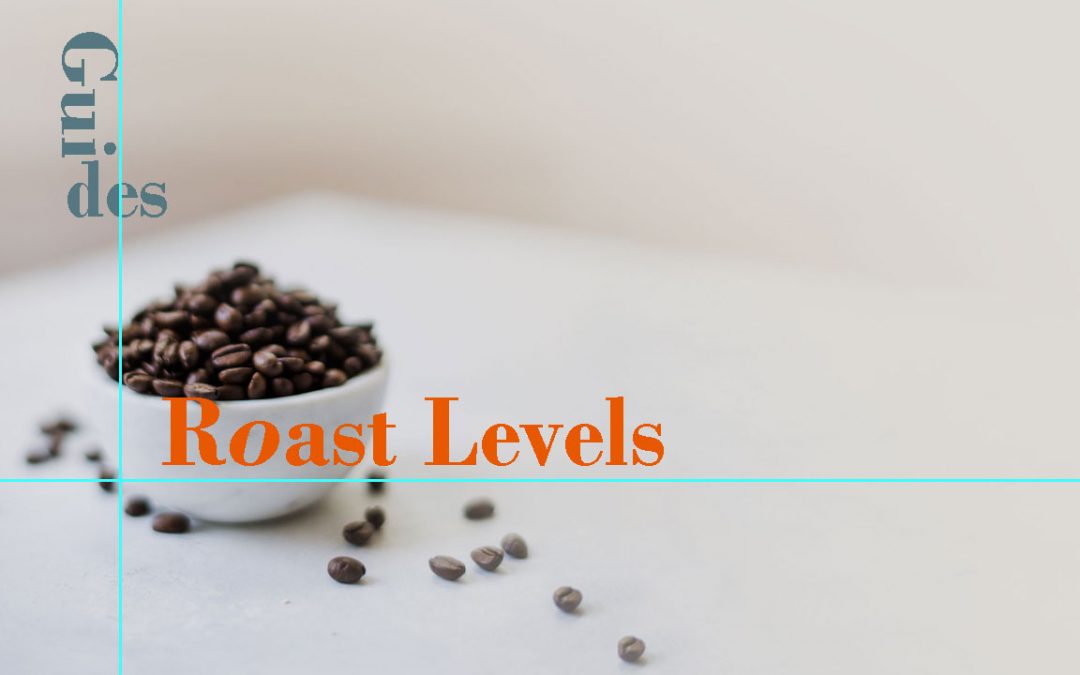Roast Levels
This video details the differences, and the nuances between the roast levels. From Light, through Medium to Dark, there are distinct differences, on that very same bean, and this now becomes a flavor choice. This video may help you to understand what you may prefer, and why.
Overview:
As you may remember from our other video on the Roasting Overview, the actual level of settling on a roast level happens in the last twenty percent. Each of the two first portions, drying portion, and Maillard reaction, have set up this final stage. At this point, which of the levels you choose becomes a taste preference. Hopefully, this guide will help you in your choices.
Generally speakiing, the darker you roast, the more you move away from the origin flavors, and into the roasted characteristics. But it is a tradeoff: There are times, with an exquisite bean, that you’d want to taste it’s native flavors; and a time when you simply want roasted.” However, the more roasted you go, the more you lose body. It’s roasted, but the body is thin.
Process
From Light to Dark, flavors change. Chemically, as you add heat, the beans go from carbohydrate to sugar–and then from sugar to caramel–and ultimately to carbon. Each of those, as you can well imagine, has its own flavor. But whether you prefer your grilled food to have no dark marks, or some dark grill lines, or in fact to be charred, there is a taste preference in this. As I’ve heard chef Gordon Ramsey say to his students, “no color, no flavor.” And I confess, I line up somewhere in the middle of this continuum.
Secondly, understand that at this point of the process, these levels are separated by mere degrees, and mere seconds. One of the greatest challenges of the roaster is to “drop” the beans at the right target. Two seconds later is a different roast.
Light
The Light roast phases are generally considered to be the two, Cinnamon Roast, and New England Roast. Cinnamon Roast is just at the beginning of first crack. Its flavors are almost grassy, and sweetness is not yet developed. But some regions of the world, in fact, almost universally prefer this level. Acid (as is caffeine) is high. New England Roast still maintains the origin characteristic of the native bean, but the acid is a bit muted.
Medium
Medium Roasts are considered to be American Roast and City Roast. First crack is underway, and sweetness begins to develop. Origin flavors are still present, yet the flavors of roast are also beginning to express. Acidity is reducing. City Roast, where we tend to camp, is the dark end of Medium. There is a great balance between origin flavors and roast flavors. First crack is just about over at this point.
Dark
There are four levels considered to be Dark: Full City Roast, Vienna Roast, French Roast, and Italian Roast. Full City Roast is just at the beginning of second crack. Roast flavor is noticeable, and the body is fully developed. A little bit of oil may begin to show on the beans. Vienna Roast is a little more bittersweet, with a caramel flavor. Origin characteristics are gone at this level. Acidity is muted. French Roast, popular with some of the major houses, is at the end of second crack, with deep caramel undertones. Roast characteristic is prominent, but the origin flavors are eclipsed at this point, with little inherent aroma or flavors of the origin beans. Italian Roast now reveal burnt tones. Acidity is gone, and the body is thin.
There is one level beyond here, and Abraham Lincoln could have written on a shovel with this one.
Let us know your preferences
Because we are a small-batch, artisan roaster, we actually love to customize the roasts to your preference. Mix half regular and decaf? Prefer dark, but not burnt? Want to taste the origin flavors within a particular bean, but still have the chocolate flavor of roast? Let us know, and we’ll try and accommodate you.

